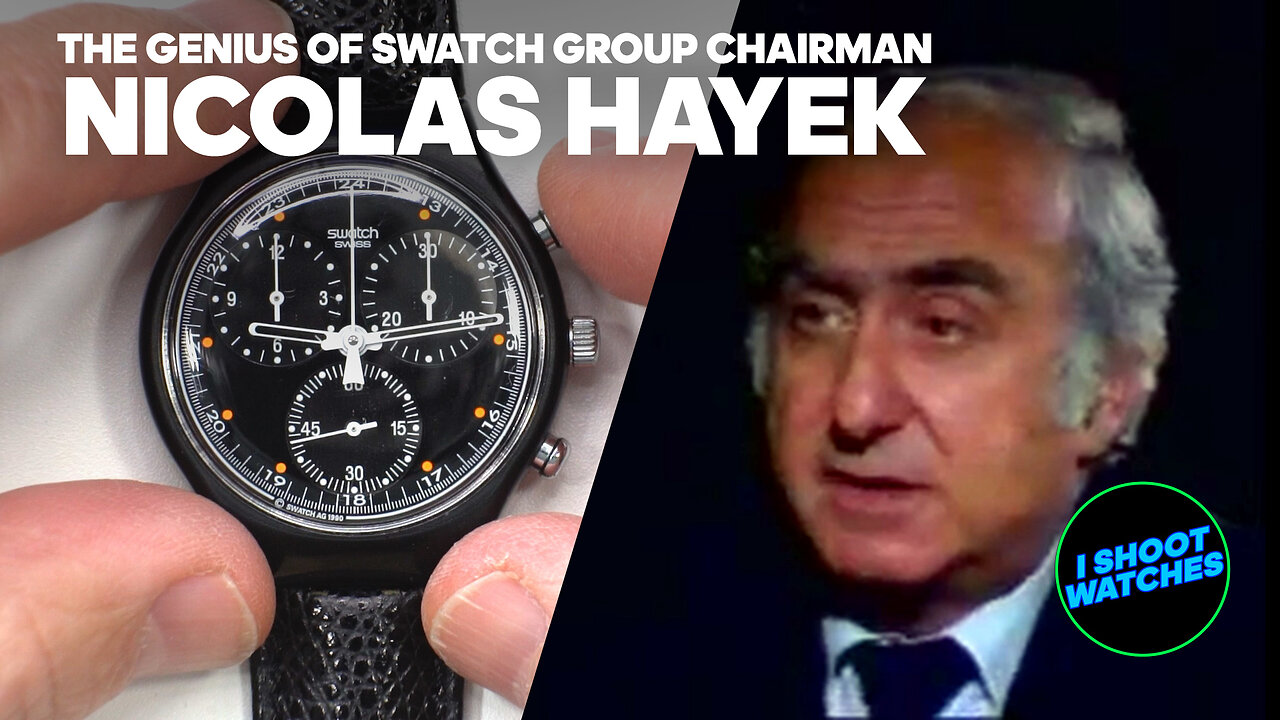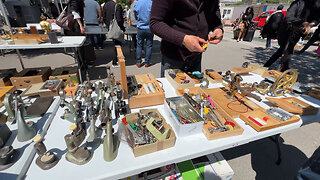Premium Only Content

The Genius of Nicolas Hayek. We Should Have Listened!
Here's a link to my .pdf about the GG gold prototype watch in which I discuss the history of the Swatch Group and my hypothesis about the origin of the GG (with updates):
https://ishootwatches.com/omega_swatch_prototype/
And here's a link to the playlist about the GG:
https://www.youtube.com/playlist?list=PLv4--9sRsFuIzcfSA8zvN_CQ8VFn0lThz
1990s CBC Interview with Nicolas Hayek.
Nicolas George Hayek (19 February 1928, Beirut – 28 June 2010, Biel/Bienne), was a Swiss-Lebanese entrepreneur, co-founder, CEO and Chairman of the Board of the Swatch Group, with principal headquarters in Biel/Bienne.
Hayek was born, the second of three children, to a Lebanese mother and a Lebanese-American father, both from Greek Orthodox Christian Lebanese families with roots in Lebanon's Northern Governorate of El-Koura. His father was trained as a dentist at Loyola University Chicago. In 2010, Hayek was ranked the world's 232nd richest person with an estimated net worth of $US3.9 billion.
Hayek started his business career working as an actuary for Swiss Re. He then assumed briefly the management of the engineering firm owned by his then ailing father-in-law, Eduard Mezger. He soon relinquished this position to search for an opportunity "to learn something new every day".
Hayek Engineering
In 1963, Hayek founded his own management consulting firm, the Zurich-based Hayek Engineering. Hayek made his mark quickly on the Swiss and European business scene by consulting and effecting successful turnarounds at several of the largest European multinationals. One of his management credos was: "The rarest resources are entrepreneurial types in top management." By 1979, Hayek Engineering had over 300 clients in 30 countries. Hayek was Chairman of the Board and CEO of Hayek Engineering from its founding until his death.
Swatch Group
In the early 1980s, Hayek was asked by a group of Swiss bankers to oversee a liquidation of ASUAG and SSIH, two Swiss watch-making firms which were in turmoil due to heavy competition from Japanese watch manufacturers such as Seiko and Citizen Watch. Hayek believed that the Swiss watch manufacturing industry could remain competitive and that ASUAG/SSIH could recover after a restructuring of operations and a repositioning of the different brands.
Hayek identified problems in products, policies and distribution as well as outdated leadership that needed to be changed. "ASUAG for example owned more than 100 separate companies - some big, some small, some modern, some backward. Most of these companies did their own marketing, R&D and assembly. It was crazy."
Hayek invested heavily in automation and the standardization of parts and tooling. This produced economies of scale and improved quality. Production was centralized, and parts were designed to be interchangeable.
The restructuring of the companies coincided with the invention of the Swatch watch which used only 51 parts, as opposed to the nearly 100 parts needed to make a traditional wristwatch without compromising on accuracy or quality and thus was cheaper to manufacture. The Swatch watch helped the Swiss watch industry reconquer a large share of the lower end of the watch market which it had lost to Japanese makers. Although the colorful plastic watch became quickly known for its flamboyant marketing, Hayek always emphasized that the Swatch watch was first and foremost a technological breakthrough.
-
 54:04
54:04
I Make Watches
2 months agoVintage Watch Parts and Tools at Genevas Plainpalais Flea Market
36 -
 1:26:49
1:26:49
Chicks On The Right
3 hours agoKohlberger gets BLASTED, Macrons sue Candace, Tulsi goes after Obama, and more on Epstein files
19.3K -
 LIVE
LIVE
Welcome to the Rebellion Podcast
12 hours ago $0.60 earnedI Feel Fine - WTTR Podcast Live 7/24
287 watching -
 1:20:39
1:20:39
Game On!
17 hours ago $1.68 earnedCommanders Are Built To WIN NOW! 2025 Preview!
26.4K2 -
 LIVE
LIVE
The Bubba Army
23 hours agoGhislaine Maxwell to Testify! - Bubba the Love Sponge® Show | 7/24/25
1,825 watching -
 16:50
16:50
Chris From The 740
2 hours ago $0.42 earnedI Didn’t Expect to Like This Fan So Much – Ogery F11 Review!
10.8K -
 8:11
8:11
Millionaire Mentor
16 hours agoJohn James SHUTS DOWN AOC With One BRUTAL Sentence
22K22 -
 31:34
31:34
Friday Beers
15 hours ago $3.55 earnedOur Horrifying Night Drunk Ghost Hunting the Manson Murders
52.5K7 -
 4:09
4:09
Blackstone Griddles
14 hours agoEndless Summer Smashburgers on the Blackstone Griddle
23.5K5 -
 7:02
7:02
China Uncensored
16 hours agoWell, I Guess Now We Know...
20.1K22